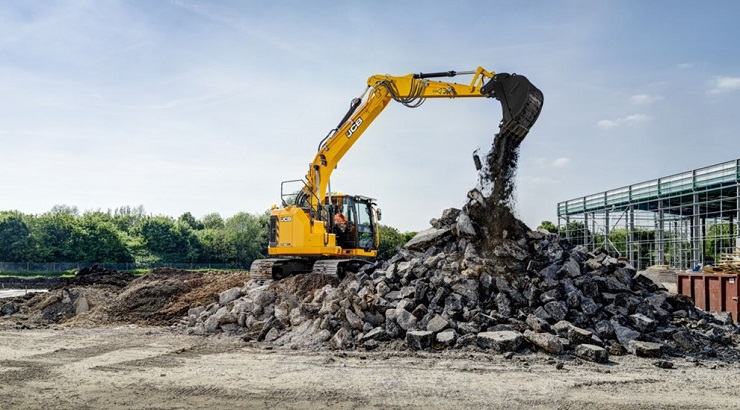Heavy Equipment
JCB Unveils Disruptive Excavator, AI Safety Tool
The 145XR has a 27% shorter tail swing than old models and a full-sized cab.

JCB has launched a reduced tail swing excavator, the 145XR, designed for congested areas, alongside an AI-driven safety solution. This latest addition to JCB’s X Series range features a 27% shorter tail swing than conventional models while maintaining a full-sized cab.
At a press conference in Staffordshire, JCB’s Global Product Innovation Director, Richard Brooks, emphasised the importance of the full-sized cab for operator comfort, stating that the excavator offers “minimum swing but maximum space.”
The 145XR is ideal for busy urban locations and alongside roads, where space is limited.
Weighing between 15 and 18 tonnes, the machine can be fitted with either a monoboom or a two-piece triple articulating (TAB) boom.
The monoboom allows for a maximum digging depth of 6,027mm with a 3-metre dipper, while the TAB boom reaches a depth of 6,167mm. The forward reach is up to 8,801mm with the monoboom and 9,230mm with the TAB configuration.
RELATED: JCB Machine That Seals Potholes in Under 8 Minutes
Powered by JCB’s Stage V Dieselmax engine with 81kW (108hp), the 145XR features Auto-Stop and Auto-Idle functions to reduce fuel consumption and emissions. Engine speed is set at 1,700rpm, improving fuel economy by 10% and lowering noise levels.
Key features include:
- A tailswing that is 27% shorter than that of a conventional 140X
- Reduced front swing with an optional TAB boom configuration
- Full-size X-Series cab
- Cutting-edge JCB UX interface with 10” touchscreen
- Up to 10% fuel economy improvement
- Extended maintenance intervals reduce operating costs
JCB Intellisense
At the same press event, JCB also introduced a new artificial intelligence-based solution, JCB Intellisense, designed to reduce the risk of harm to operators.
This system, integrated into JCB’s Loadall telescopic handlers, uses four cameras—two AI cameras on the sides, one at the rear, and a standard forward-facing camera—to enhance visibility and detect pedestrians within a certain range.
Additionally, the system includes a standard alert button that allows the operator to record a ten-second data segment, which is automatically sent to and stored in the cloud.
Balfour Beatty is using JCB Intellisense on the HS2 project, and future tenders are likely to require the technology, according to JCB Product Manager Charlie Catallo.














